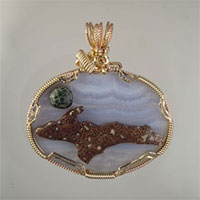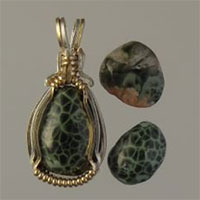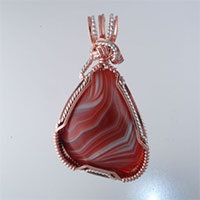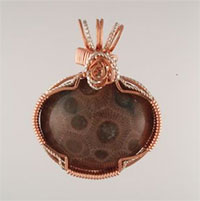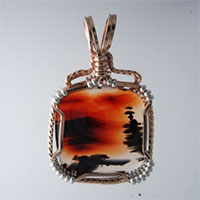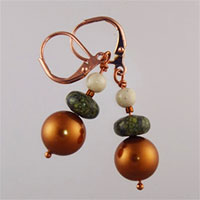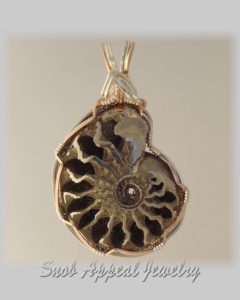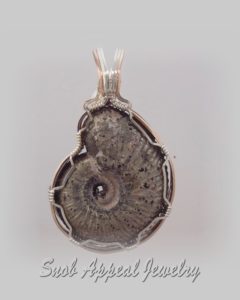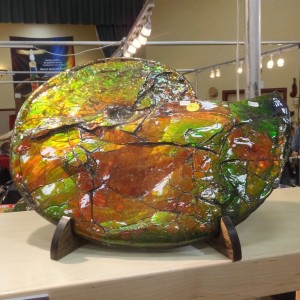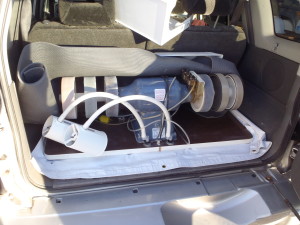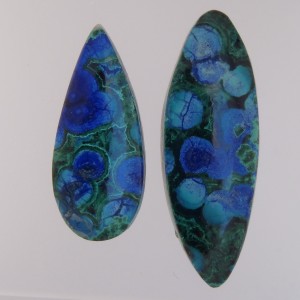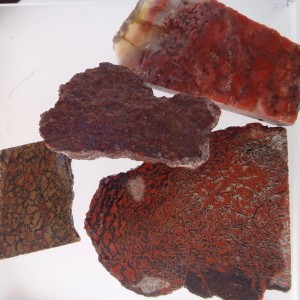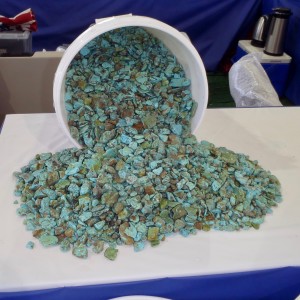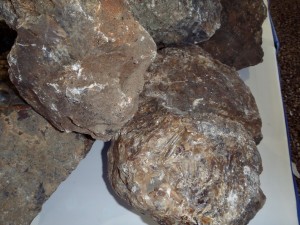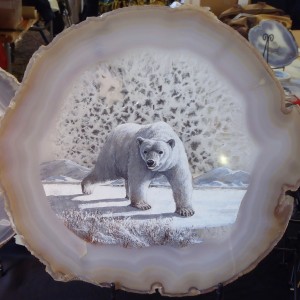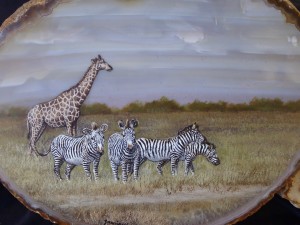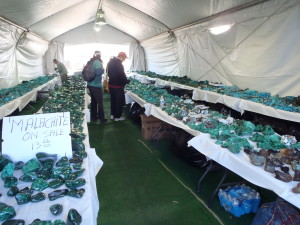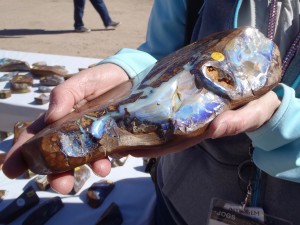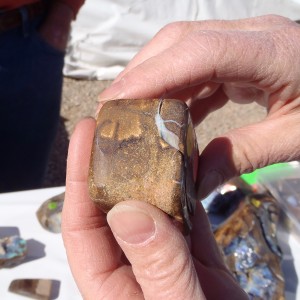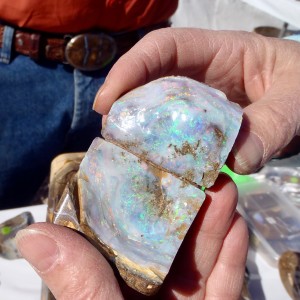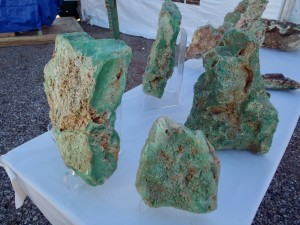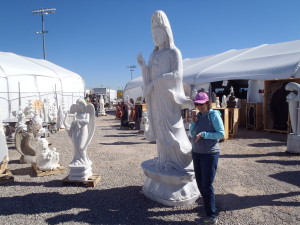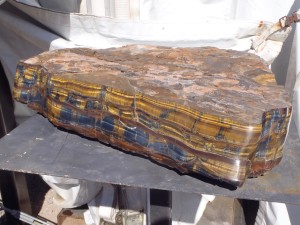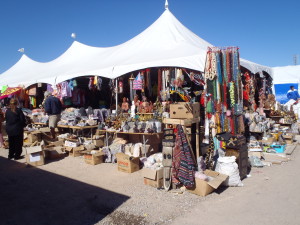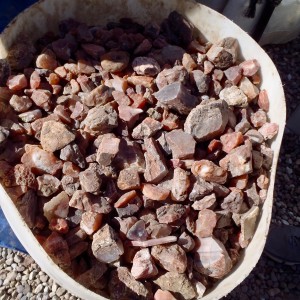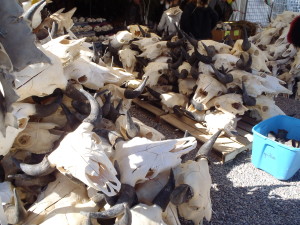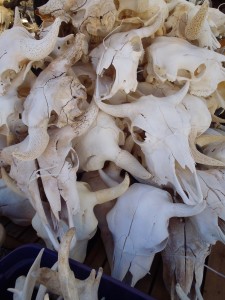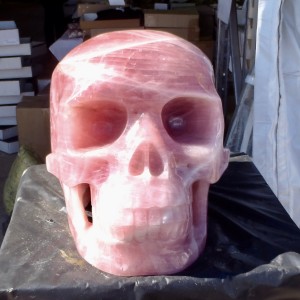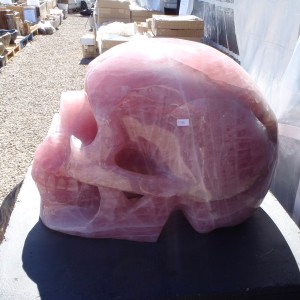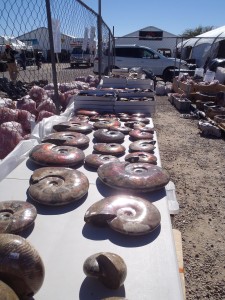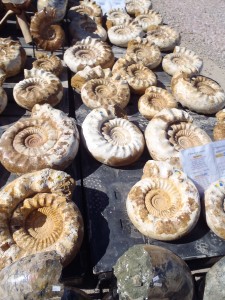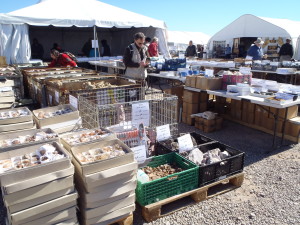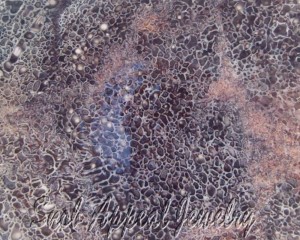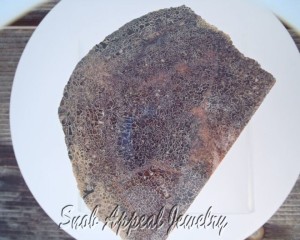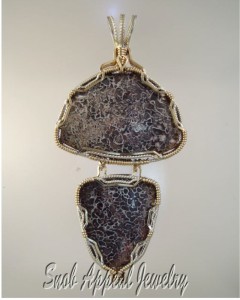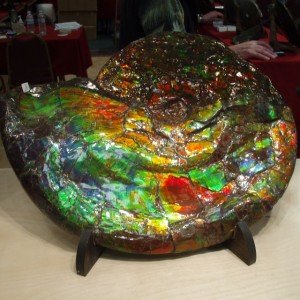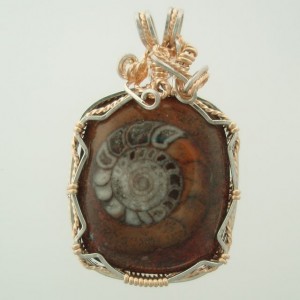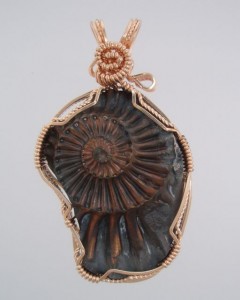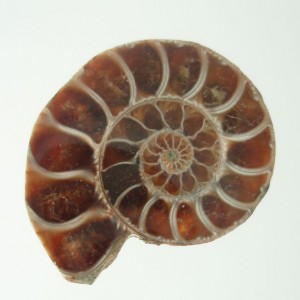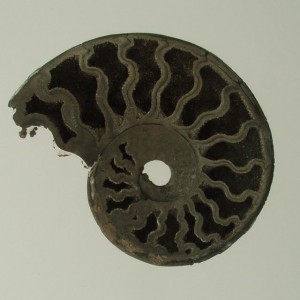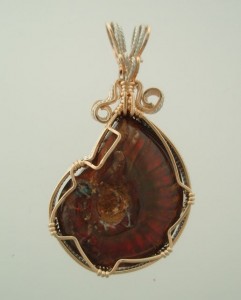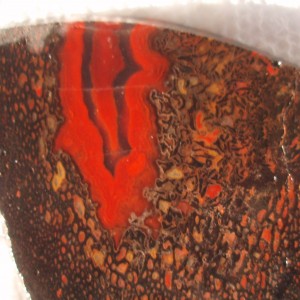
One of the Gem Dinosaur Bone Slabs I found last year.
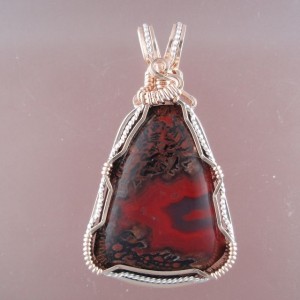
Jewelry I made from the above slab.
Last year I bought some amazing gem dino bone slabs in Quartzsite. These particular slabs came from the estate of a famous bone collector. I love gem grade Dinosaur bone. It amazes me that each individual cell is many times an individual agate, within the agatized D-Bone. These cells can be fortification agates of just nice clear Chalcedony or some of the great colors in good gem Dinosaur bone can be vivid red, orange, yellow, pink, brown.
I cut a few slabs with a multi-stone pendant in mind, and searched out some bone-shaped dinosaur bone beads. I layed out the pieces and saw good possibilities. Bonnie has wanted me to make a pendant for myself to wear at shows, and D-Bone seemed to be a good choice for a manly pendant.
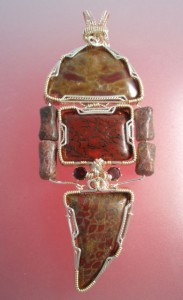
My most challenging pendant thus far.
I thought about this piece of jewelry for at least a year. With multi-stone pendants you have to know the end, and mentally work backwards. Sometimes I need a challenge, or I think I do. No matter what stage you are in your wire wrapping endeavors, you should always look for something to challenge your brain, fingers, and tools. I sometimes get bored just making simpe single-stone wraps and enjoy the challenge of multi-stone wrapping.
Even with all my experience I sometimes try things that just do not work; I have to start over, and try again. This is very frustrating at times. I can almost wire wrap a single stone with my eyes closed, but these multi-stone things are another issue entirely.
Multi stone wrapping is equal parts of engineering, art, and expertise. I find myself inventing techniques to conquer challenges when using multiple stones. A good understanding is also important as to what your wire, your tools, and yourself may be capable of. Sometimes it really upsets me when I think I can do something, and it fails. But I find the best way to learn is from your mistakes (sometimes it takes reminder mistakes).
Ahead 1 year: I laid out my dinosaur bone cabs on my workbench and was certain that I had a plan, but instead I had two complete failures which frustrated me and taught me that perhaps I should rethink this pendant. What I had in mind was extremely complicated and intricate. Can I really pull this off? Finally after being on my workbench for approximately three weeks the pieces began to come together. The big challenge was how to connect piece to piece and still make the work come together artistically.
Also you have to think about what metal to use. In this pendant I decided to use Argentium sterling, yellow gold and pink gold (three tone). I decided that twisted pink always looks nice with silver and I bound it with half-round gold. In this pendant the center rectangular dinosaur bone cabochon is the featured stone: bright red and a perfect pattern. I used another slab of
dinosaur bone to fashion the top and bottom pieces with the beads coming from another piece of dinosaur bone. I worked on this off and on for three weeks so that my frustration level would not exceed my judgement. Backing off and thinking things through entirely indeed helped.
I had a larger gap between the second and third pieces than I expected, which gave me the chance to insert the two 5mm faceted garnets between which adds a bit of dignity to the piece. This entire piece is about 4 1/4″ by 1 3/4″.
The finished piece exceeded my expectations, and I will be happily wearing this piece beginning with the upcoming Tucson gem shows. It will open discussions with other wire wrappers that I meet.! I enjoyed the challenge of making this piece of jewelry, but I am elated now that it is done! I name this the Dinosaur Boneyard. So if you are at the Tucson shows and you see a guy wearing this, say hi and introduce yourself!
Speaking of the Tucson Gem shows, my daily blogs will start later this week–hope you join me for my adventures!


